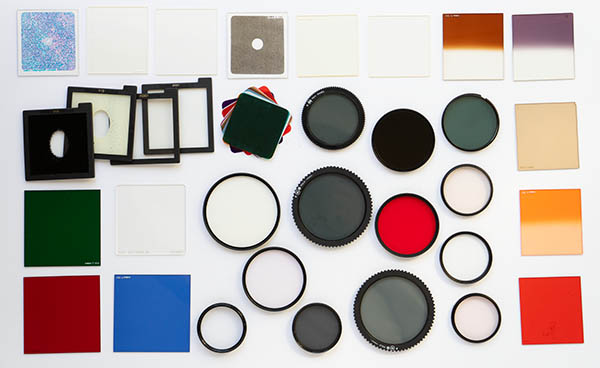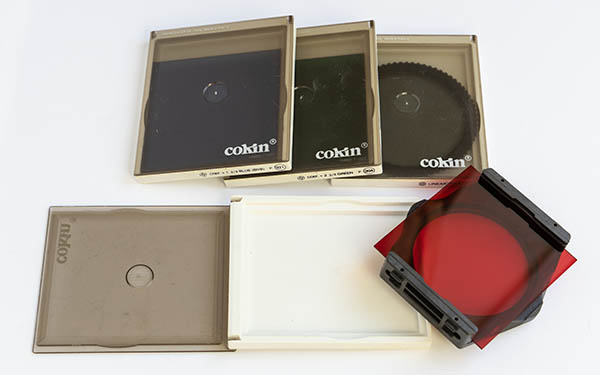06 Aug 5 essential filters for black and white photography you should own
5 essential filters for black and white photography you should own
When you walk into a camera store or look at an online photographic shop there are so many filters for black and white photography that you could buy. The problem is, which one?! What actually makes a good black and white photograph and how can I achieve that? Do you buy into a filter “system” or buy individual filters? The people in the store might or might not know which ones are right for your type of photography.
When I first started photography in the days of film (click this link to see the best black and white film for travel photography), I was so overwhelmed by the vast array of filters that I spent a lot of money on buying up as many as possible. My thinking behind this was that it would improve my photography. I am now older and marginally less stupid but I have learned from years of trial and error.

Here are some of our really essential filters for black and white and colour photography as well as our shameful ones!
There are 5 essential filters for black and white photography that every photographer should own. I’d like to show you them now and explain what each one does and why you need it. If you’ve got some time on your hands and want to know tips and geeky explanations on how to convert colour to black and white, then click that << link!

Using Polariser to darken the sky
The UV or Haze or Skylight Filter
The first filter I am going to recommend is one I always buy for any new lens I get. This filter has 2 main reasons to live on your lens.
Firstly: Protection – I can’t count the number of times I have “dinked” the front glass on my lenses.
Sometimes it’s as simple as a quick knock against my belt when carrying the camera. (We use awesome sling type straps that go across your body. Ally swears hers is the best thing ever and is attached to it like an umbilical cord. She uses a Ladies Black Rapid. I have a Sun Sniper.) I once scratched my Nikon lens coating when putting the lens cap back on the lens. Having just finished photographing, the rain was about to bucket down, and I was in a hurry. This does not excuse my not having a protector UV filter on the lens.
A filter is also easier to clean than a lens element. I have even dipped mine in water to wash off salt or dust after photographing waves or deserts.
Pro Tip: When photographing in areas that really dirty up your lens (like sea spray) carry a spare filter and change filters when the first gets dirty. It’s faster than trying to clean a lens in an inhospitable environment.
Whenever I buy a new lens the very next thing I buy is a UV filter. $50 to $100 for a high quality filter that doesn’t seem to do much might seem extortionate but if it saves the very soft (and very expensive) lens coating from just one scratch it will be worth it.
Secondly: Sharper and more defined details in the background – A UV filter cuts out the UV light and cuts through the haze making distance objects seem clearer. With film it is more important to use a UV filter because film is extremely sensitive to UV light. However, digital sensors are generally less sensitive to UV.
This filter works the same with both colour and black and white photography.
Lastly, the UV haze filter is not to be confused with the UV transmitting filter. This only allows ultraviolet light to pass through the lens and blocks out all the other visible light spectrum.
The graduated filter (Grad)
The graduated filter is the next one in the list, for this filters for black and white photography post. A graduated filter is a neutral density filter that gradually fades to clear. The reason for this is that most skies are darker than the land so the graduated filter darkens the sky but not the land. See more explanations on this with our exposure compensation post, and ‘why your camera lies to you’!
Round screw or system grad filter?
These filters come in either a round screw in version or as a “system” version where you attach a filter holder to the front of the lens and then slot in the square filter of choice. The advantage of this type of filter is that you can slide the filter up or down depending on the amount of darkening you require. The other advantage is you buy different size adaptor rings for the system types that means you don’t have to fork out for multiple filters, only new adaptor rings. Both types of filter allow you to spin them around.

Graduated filters for black & white film photography
The Grad filters come in various strengths of darkening. Buy some cheap ones to experiment with first before spending a lot on one.
In my young college days these Cokin filter systems were all the rage, and from my extensive Cokin system, the grad was used more than anything.
While this filter works just as well in colour photography as it does in black and white there are a few other grads that work in colour too. I used to use a tobacco (orange/brown) to get warmer low sun photographs or a blue/purple to get more interesting cloudy skies.
The Neutral density filter (ND)
One of our favourite creative filters for black and white photography is the Neutral Density filter. It reduces the amount of light coming through the lens thus giving you longer exposures that you are unable to get in bright light even with an ISO of 50.
Why would you want longer exposures?
It will capture movement rather than freezing it. This could be either water, people, vehicles, clouds or anything that moves. On water this produces an ethereal misty effect and with people it can produce water-like blurs. It is very effective if some people are moving and some totally still. We have used this filter a number of times for dramatic effect on water. See our post on how we got on (or not) when we first used our ND filter recently.

Just make sure you have a very sturdy tripod as it’s so easy to get a blurry image with even the smallest bit of camera shake during a 30 second exposure. See our tutorial on how to photograph with an ND filter.
This filter works just as well in colour as in black and white photography.
Single colour filters for Black and white film
Black and white film uses a full range of the visible colour spectrum to create a full range of tones on your black and white negative. What a single colour filter does is to stop some of those colours from reaching the film and thereby making that area darker. For example, the filter we need to use to darken the sky would be one that stops blue reaching the film. Yellow, orange and red colours are opposite blue and so do this very effectively. A blue filter would darken reds and make the blues appear lighter. See our post on how to darken skies for more details on single colour filters.

Filter system of single colours for black and white photography
Buy a full range of cheap filters and try them out to see what you get before committing more money to them.
The Polarizing filter
There are 2 main uses for polarizing filters, reducing reflections and darkening skies.
Here is how it works. Light reflected from a non-metallic surface becomes polarized. A polarizing filter allows light to pass in only one direction. This allows us to reduce reflections on non-metallic objects.
Light from the sky is also polarized, so a polarizing filter will polarize the light and reduce how much light enters the camera. As a result this will make the sky dark in a photo.

Photograph taken without and with polarizing filter
A polarizer will darken down blue sky but not affect clouds. (The effect is most prevalent on the area of sky that is at 90 degrees from the sun – Look at the sun – carefully – and then the darkest sky will be at 90 degrees.) It will also reduce reflections which can make trees etc seem rather vivid in colour. To use the polarizer just turn the filter until the sky goes dark or the reflections disappear.
A few things to be aware of with polarizing filters
This polarizing filter technique will work with both film and digital, colour and black and white. In colour it also increases the saturation of many objects by reducing reflections.
There are 2 types of polarizer. A linear and a circular. A circular CPL polarizer is best for modern cameras as linear polarizers can affect exposure meters and autofocus adversely.

Filters can create so many effects and as we have discovered in our photographic adventures, not all are good. With these 5 essential filters to start your collection off though, you just can’t go wrong. What do you think of our choice of essential filters for black and white photography? Are there any you think we should add to the list? Do you have an embarrassing collection worse than ours? Let us know in the comments below.
Above all else, just go out and create photographs that make you happy.
See our Top 10 Essential Photoshop shortcuts.




Sorry, the comment form is closed at this time.